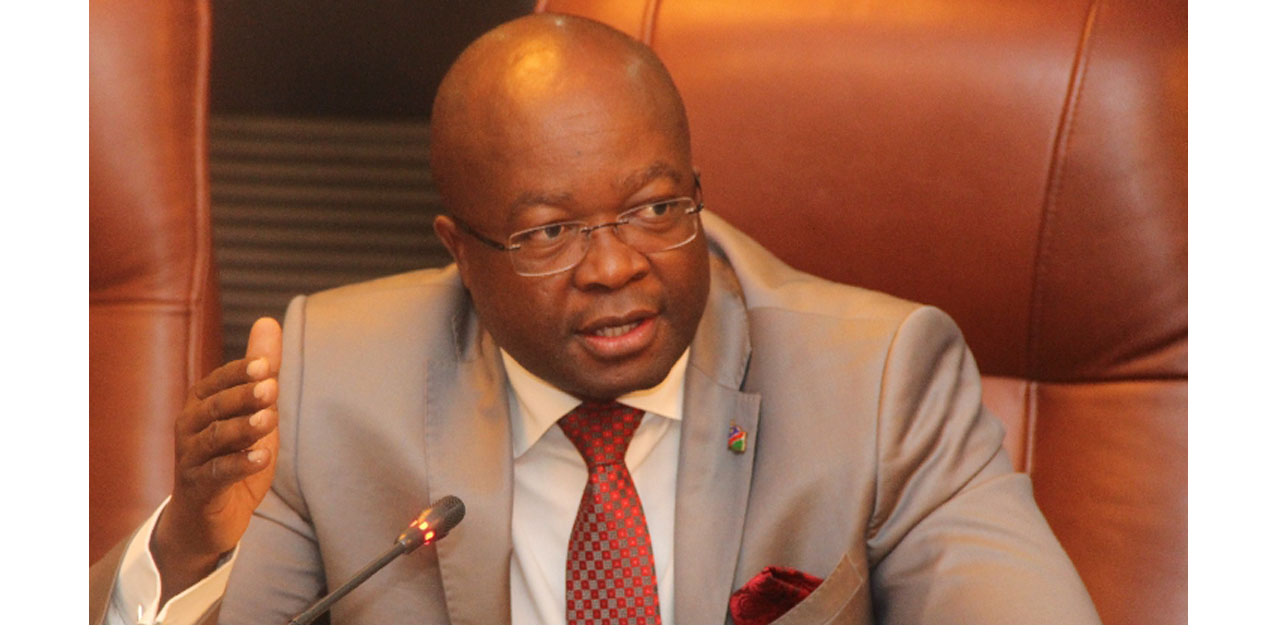Martin Endjala
Following some scepticism from the public on the government’s 24 percent stake in the Green Hydrogen project, it is projected that government will make a net profit of a quarter Billion Namibian Dollars in the next two years.
This is unlike mining or oil where government traditionally receives next to nothing for leasing out the land, for mining exploration licences, for example.
It is, however, not the case with green hydrogen, as the government is said to get paid in a region of N$10 000 per licence. This means the government is already being compensated for availing the land for development.
This is according to the Green Hydrogen Commissioner James Mnyupe and the Green Hydrogen Chairperson Obeth Kandjoze in a collective response article issued yesterday regarding scepticism and clarity on the equity uptake by the government.
Mnyupe emphasized that margins in green hydrogen are likely to be much lower than in traditional sunset industries like oil and gas or even commodity extraction, maintaining that there is less space to be ‘generous’ with project returns.
He added that with massive amounts of capital required to establish this industry, calling for a free carry in Namibia where other competing countries are not, is just reducing the competitiveness of the Namibian industry, which is the opposite of what competing countries are doing which is offering massive incentives to attract investment.
In addition, the Commissioner stated that considering that these incentives will last for 10 years, costs of green hydrogen could drop to below US$2/kg.
“So when our Namibian sceptics advocate that GRN must ask for 24 percent free carry because the wind and the sun are ours, they are doing so without possibly fully appreciating all the facts and the globally competitive market dynamics that we operate in,”Mnyupe said.
Additionally, the notion to call for free carry Mnyupe said, is made without considering the fact that Namibia will earn land rentals, royalties from green hydrogen sales and taxes, on top of the job creation and localisation targets that the project has been tasked with delivering. A few points are therefore relevant.
He reassured that the government negotiated hard to maximise the benefit that Namibia will receive in cold hard cash from the establishment of its green hydrogen industry, ensuring that a combination of fixed and variable revenue streams are secured.
From all direct revenue lines, the government is expected to receive over 40 percent of all the distributions available from the project, increasing to over 50 percent including its 24 percent equity stake.
This means that for every dollar that a private investor earns, Namibia is likely to earn the same despite only providing a quarter of the requisite capital.
This excludes any other indirect and induced economic impacts, which should be several times this amount.
In addition to these direct and indirect economic benefits, the project has been tasked with implementing the project in a way that ensures that 90 percent of all jobs and 30 percent of all procurement, will be from Namibians.
Meanwhile, the Green Hydrogen Chairperson Obeth Kandjoze said that to fund its equity at financial close, the government has secured a letter of intent from the European Investment Bank (EIB) of €500 million in funding, which should be sufficient to fund 100 percent of the government’s equity requirements for phase one.
The development budget of the project up to the final investment decision is €93 million. The government negotiated to acquire a 24 percent stake in Hyphen which results in a funding obligation for the government of €23 million.
Namibia already received €40 million from the Dutch government in grants to help with the development of this and other projects in Namibia, which means that government still has €17 million to use to de-risk other hydrogen projects.
Meanwhile, €40 million has been placed in the SDG Namibia One Fund and intend to raise another €60 million from other sources around the world, all to be used to de-risk the development of this industry in Namibia.
Kandjoze explained that when the project takes its final investment decision and prior to the financial close of phase one of the project, the government will consider whether to retain all of its equity or reduce some of its stakes and allow other investors to buy a now de-risked interest in the project at a profit to the government.
This would include local pension funds, banks and other local strategic investors.
“All this is possible because the government had the foresight to recognize that the world is moving strongly to combat climate change and was looking to avail help from any countries that were willing and able to contribute to this effort which requires us all to hold hands amongst ourselves at home and with the global community at large,” said Kandjoze.
Namibians are therefore urged to consider supporting the government’s efforts to provide jobs and livelihoods to the people of Namibia, while at the same time meeting its policy objectives to industrialize, diversify the Namibian economy, improve employment and livelihoods, and become responsible citizens of the global community.




